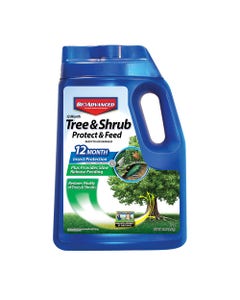

Emerald Ash Borers
The Emerald Ash Borer (EAB) is a major threat in parts of the United States, responsible for the destruction of tens of millions of ash trees.
This bright metallic-green adult insect can be smaller than a dime but is capable of taking down trees hundreds of times its size. Adults are typically 1/2 inch long and 1/8 inch wide. Its eggs are extremely small – approximately 1/25 of an inch – and are reddish-brown in color. Larvae are white, flat-headed borers, or grubs, with distinct segmentation.
Damage
Adults emerge in late spring, earlier if the weather is warm, with females laying their eggs shortly after. The larvae bore into the ash tree and feed under the bark, leaving tracks visible underneath the bark. The feeding disrupts the tree's ability to transport water and nutrients, resulting in dieback and bark splitting. Small trees can die in as quickly as one to two years, while larger infested trees may die in three to four years. Emerging adults create D-shaped emergence holes in the tree.
The negative effects of EAB infestation don't end with the death of the tree. Often, tree services must be hired to remove the dead tree, which can cost hundreds and even thousands of dollars.
Know the symptoms of EAB: thinning or dying of tree crowns, suckers at the base of the tree or in branch crotches, splitting bark, tunneling under the bark, D-shaped exit holes and woodpecker activity.
Location
As of July 2016, Emerald Ash Borer is currently found east of the Rocky Mountains. In most states where it has been found, quarantines restrict movement of plants and firewood. Emerald Ash Borers have been found in Arkansas, Connecticut, Colorado, Georgia, Illinois, Indiana, Iowa, Kansas, Kentucky, Louisiana, Maryland, Massachusetts, Michigan, Minnesota, Missouri, Nebraska, New Hampshire, New York, North Carolina, Ohio, Pennsylvania, Tennessee, Texas, Virginia, Wisconsin and West Virginia.
How to Take Action Locally
- Call the USDA Emerald Ash Borer Hotline at 1-866-322-4512 or your local USDA Animal and Plant Health Inspection Service (APHIS) office if you think you've found an EAB infestation.
- Record the area where you found the insect, and take photos of the insect and any damage.
- Find contact information for your local APHIS office at the USDA's Stop the Beetle campaign website, www.stopthebeetle.info or for more information on Emerald Ash Borer, visit www.emeraldashborer.info
Cultural Solutions
- Do not remove firewood from your property or carry it across state lines.
- Buy firewood from local sources; if possible, buy kiln-dried firewood.
- Before spring, burn your remaining firewood to prevent the spread of pests to live trees.











